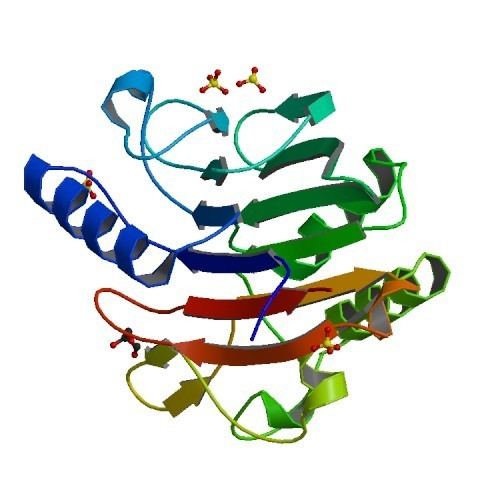 | ||
Long interspersed nuclear elements (LINEs) are a group of non-LTR (long terminal repeat) retrotransposons which are widespread in the genome of many eukaryotes. They make up around 20% of the human genome. Some sources also give "Long interspersed nuclear element" as the long form for LINE. LINEs make up a family of transposons, where each LINE is about 7000 base pairs long. LINEs are transcribed into mRNA and translated into protein that acts as a reverse transcriptase. The reverse transcriptase makes a DNA copy of the LINE RNA that can be integrated into the genome at a new site. There are about 100,000 LINEs in your genome. Due to the accumulation of random mutations, the sequence of many LINES has degenerated to the extent that they are no longer transcribed or translated. Comparisons of LINE DNA sequences can be used to date transposon insertion in the genome.
Contents
History of discovery
The first description of an approximately 6.4 kb long LINE-derived sequence was published by J. Adams et al. in 1980.
Types of LINE elements
Based on structural features and the phylogeny of its key enzyme, the reverse transcriptase (RT), LINEs are grouped into five main groups, called L1, RTE, R2, I and Jockey, which can be subdivided into at least 28 clades.
In plant genomes, so far only LINEs of the L1 and RTE clade have been reported. Whereas L1 elements diversify into several subclades, RTE-type LINEs are highly conserved, often constituting a single family.
In fungi, Tad, L1, CRE, Deceiver and Inkcap-like elements have been identified, with Tad-like elements appearing exclusively in fungal genomes.
L1 element
The LINE-1/L1-element is the only element that is still active in the human genome today. It is found in all mammals.
L2 and L3 elements
Remnants of L2 and L3 elements are found in the human genome. It is estimated, that L2 and L3 elements were active ~200-300 million years ago. Unlike L1 elements, L2 and L3 elements lack flanking target site duplications.
In human
In the first human genome draft the fraction of LINE elements of the human genome was given as 21% and their copy number as 850,000. Of these, L1, L2 and L3 elements made up 516,000, 315,000 and 37,000 copies, respectively. The non-autonomous SINE elements which depend on L1 elements for their proliferation make up 13% of the human genome and have a copy number of around 1.5 million. Recent estimates show the typical human genome contains on average 100 L1 elements with potential for mobilization, however there is a fair amount of variation and some individuals may contain a larger number of active L1 elements, making these individuals more prone to L1-induced mutagenesis.
Increased L1 copy numbers have also been found in the brains of people with schizophrenia, indicating that LINE elements may play a role in some neuronal diseases.
Propagation
LINE elements propagate by a so-called target primed reverse transcription mechanism. This mechanism was first described for the R2 element from Bombyx mori: A specific nick on one of the DNA strands at the target site is generated by the endonuclease encoded by the R2 element. Thus, a 3'OH group is freed for the R2 reverse transcriptase to prime reverse transcription of the LINE RNA transcript. Following the reverse transcription the target strand is cleaved and the thus created cDNA integrated
Regulation of LINE activity
It has been shown that host cells regulate L1 retrotransposition activity, for example through epigenetic silencing. For example, the RNA interference (RNAi) mechanism of small interfering RNAs derived from L1 sequences can cause suppression of L1 retrotransposition.
In plant genomes, epigenetic modification of LINEs can lead to expression changes of nearby genes and even to phenotypic changes: In the oil palm genome, methylation of a Karma-type LINE underlies the somaclonal, 'mantled' variant of this plant, responsible for drastic yield loss.
Human APOBEC3C mediated restriction of LINE-1 elements were reported and it is due to the interaction between A3C with the ORF1p that affects the reverse transcriptase activity.
Association with disease
Correlations between L1 mobilization and oncogenesis have been reported for epithelial cell cancer (carcinoma). Shift work sleep disorder is associated with increased cancer risk because light exposure at night reduces melatonin, a hormone that has been shown to reduce L1-induced genome instability.
